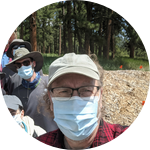
Jeff Ravage
Adjunct Resercher - Denver Botanic Gardens
North Fork Watershed Coordinator- Coalition for the Upper South Platte
More
Entering final analysis phase
We have finished the experiment and have now moved into the analysis phase. The overwhelming success of the coldfire project forced us seal and archive our materials related to this study for the S...
Nearing the goal line
Hello lovely funders,Today we began the final stages of the Carbon experiment. Our mushrooms have been doing their thing for a little over a year and we are now drying them out. There was some vari...
2024 Progress notes
The carbon experiment has been running since September of 2023. We are using 10 species of mushrooms to digest both hardwoods and softwoods to determine the carbon sequestration capacity of the pos...
We are (finally)getting ready to begin
We ran into delays with finding the right strains of wild collected mushrooms, but now have our roster selected. Thanks to you on Experiment.com and Aurora Water and Jefferson County Open Space, bo...
